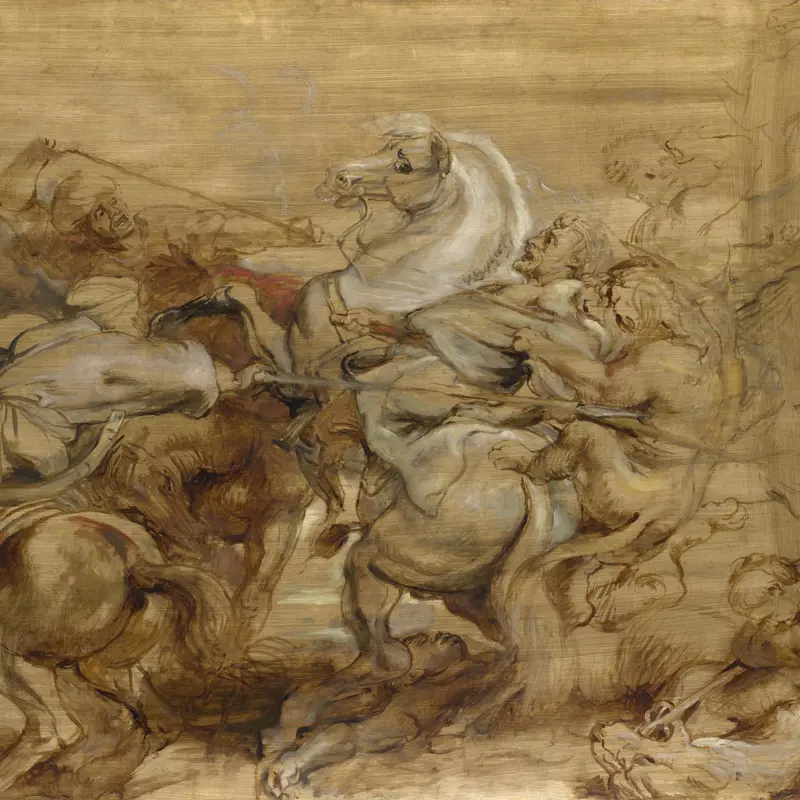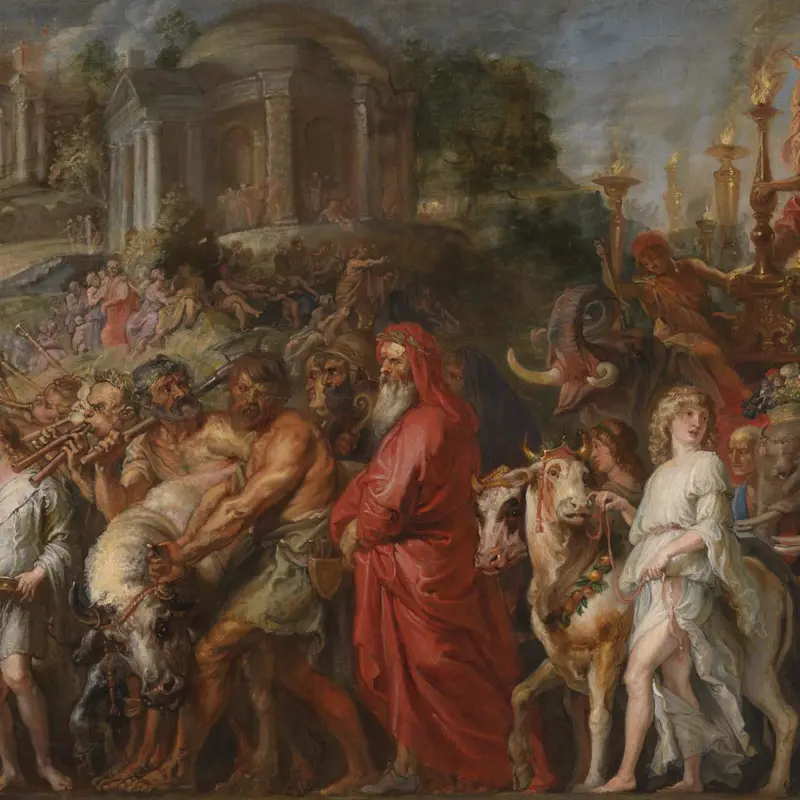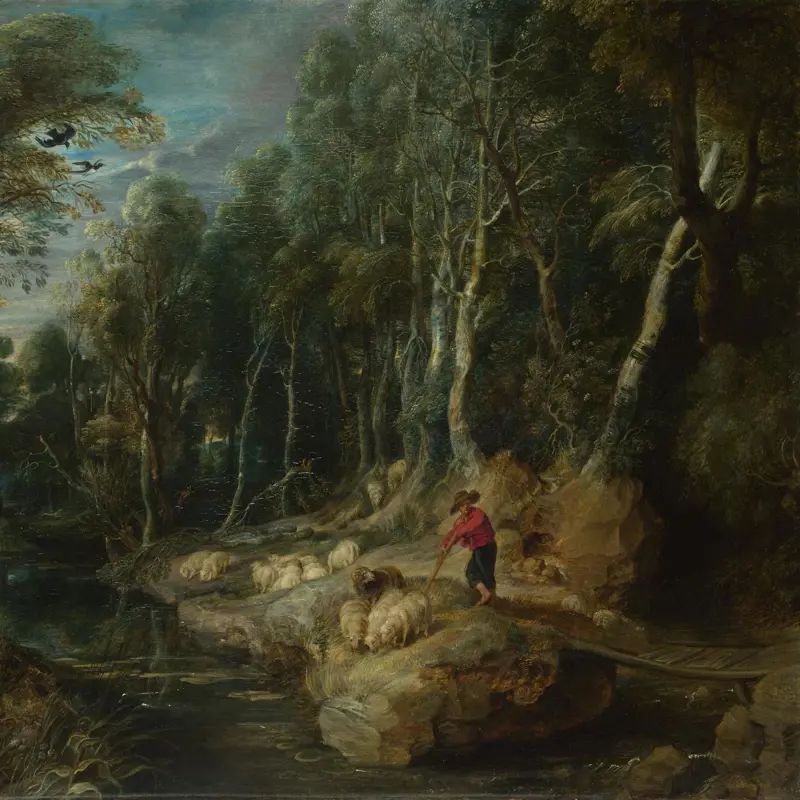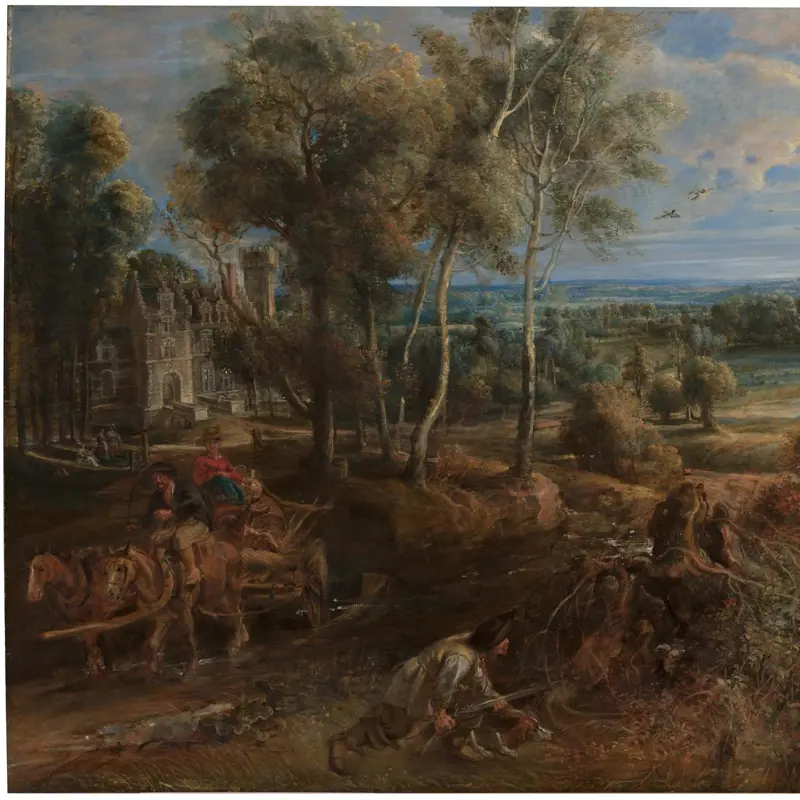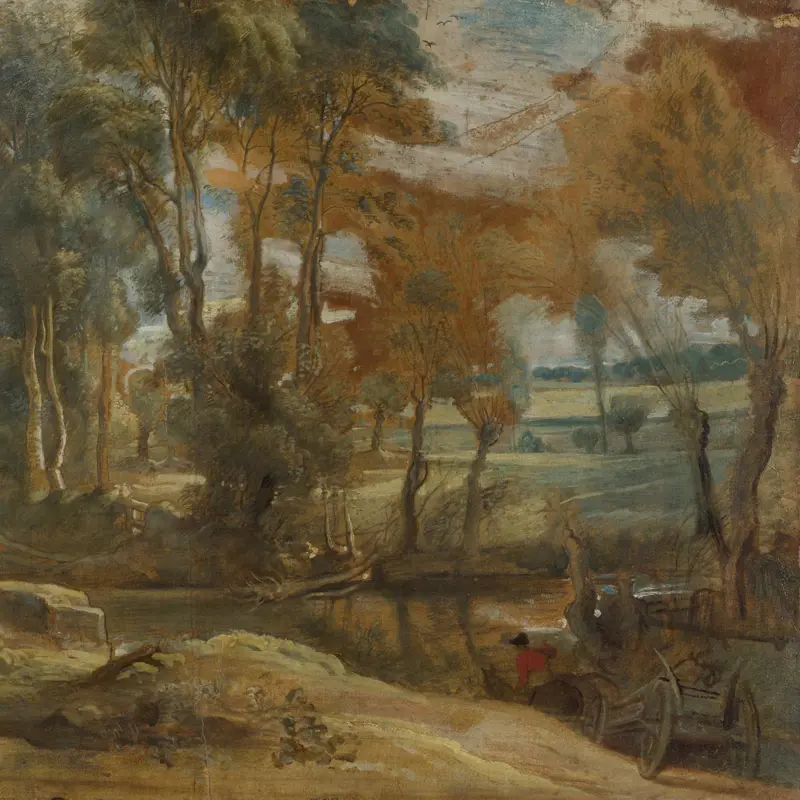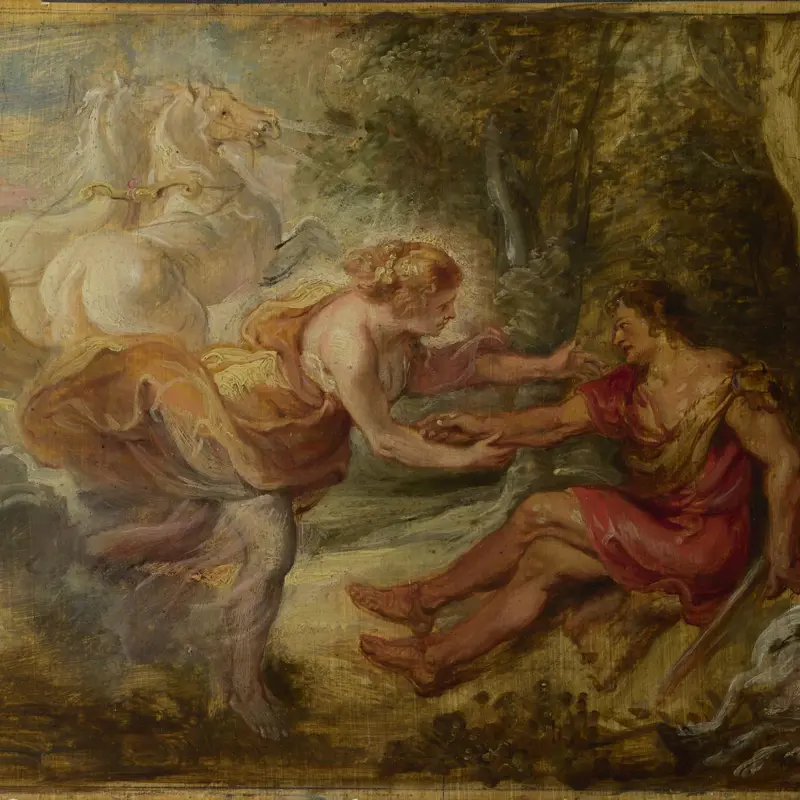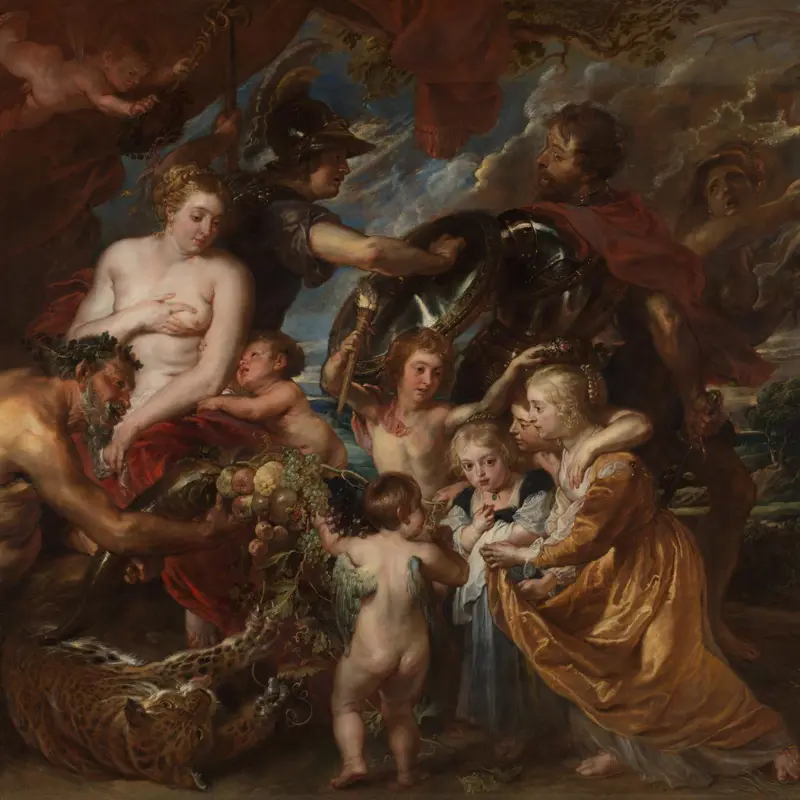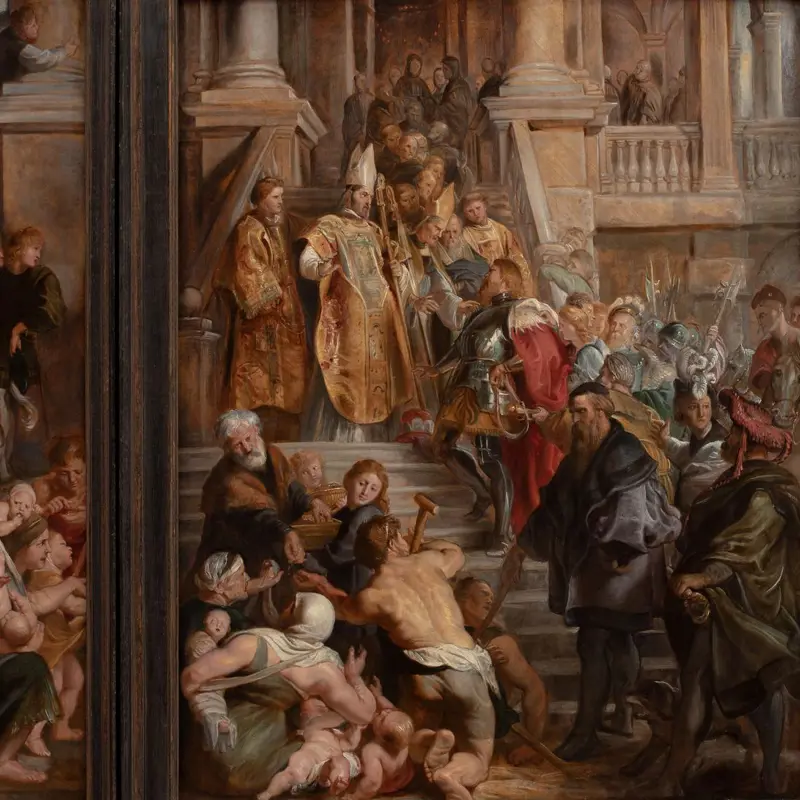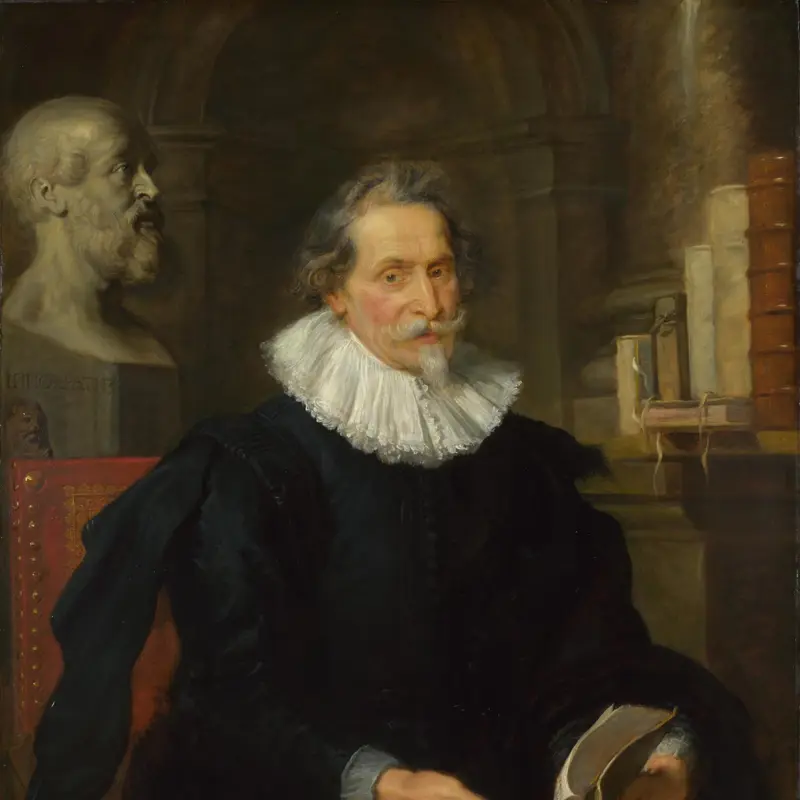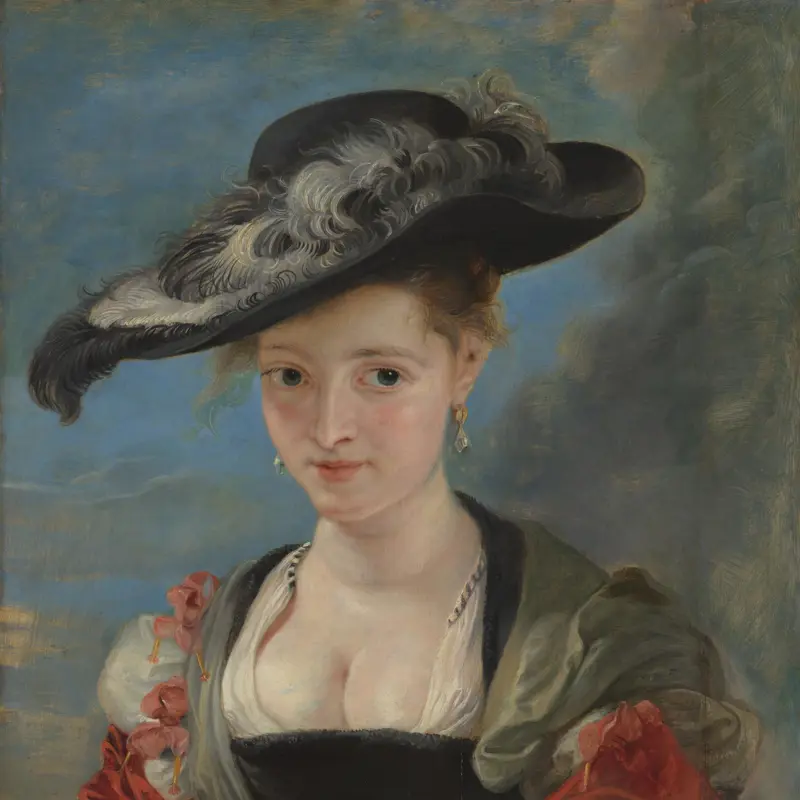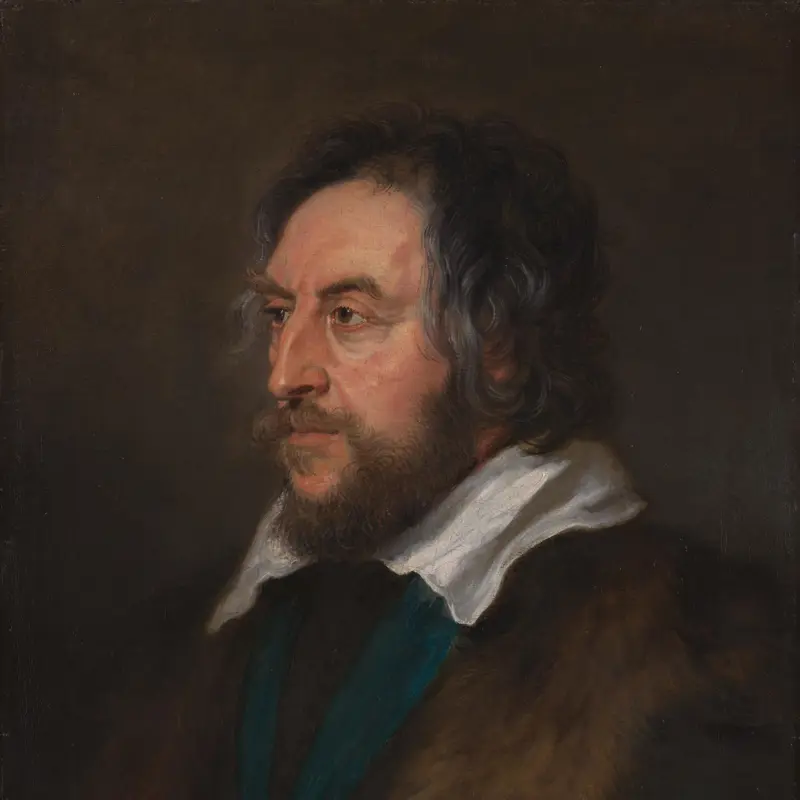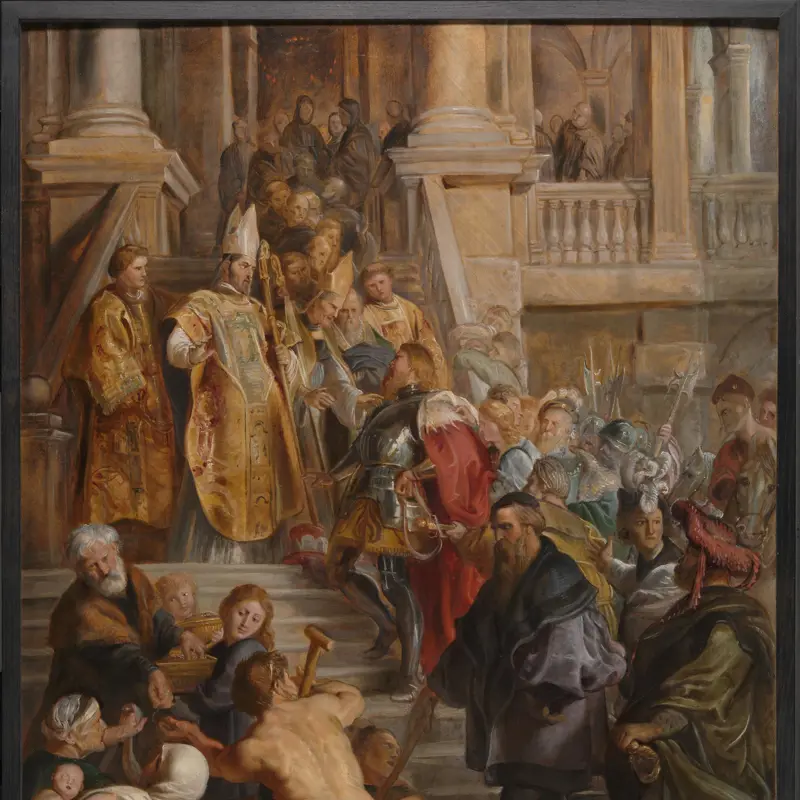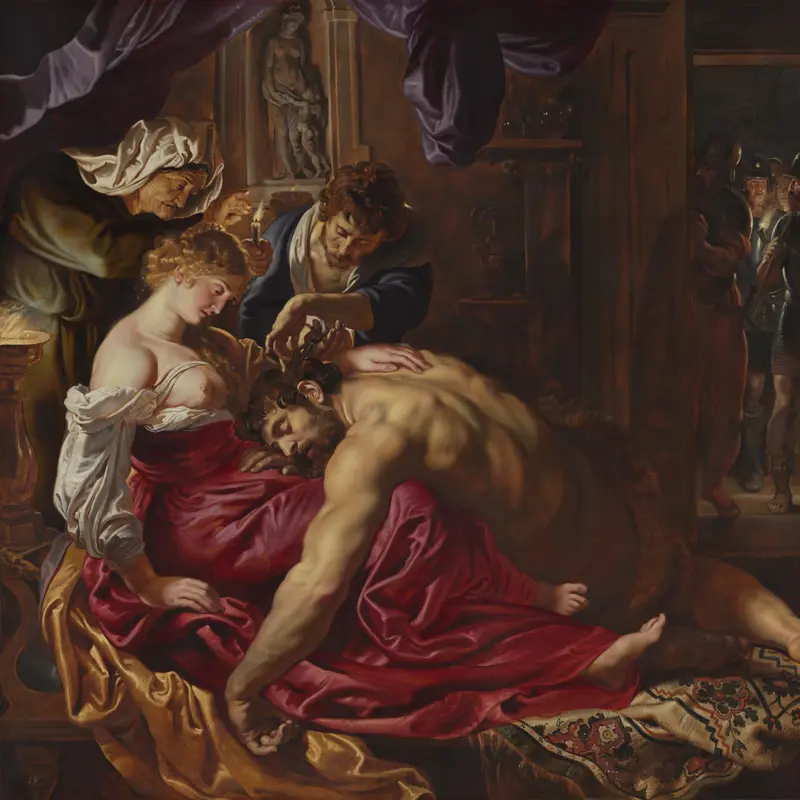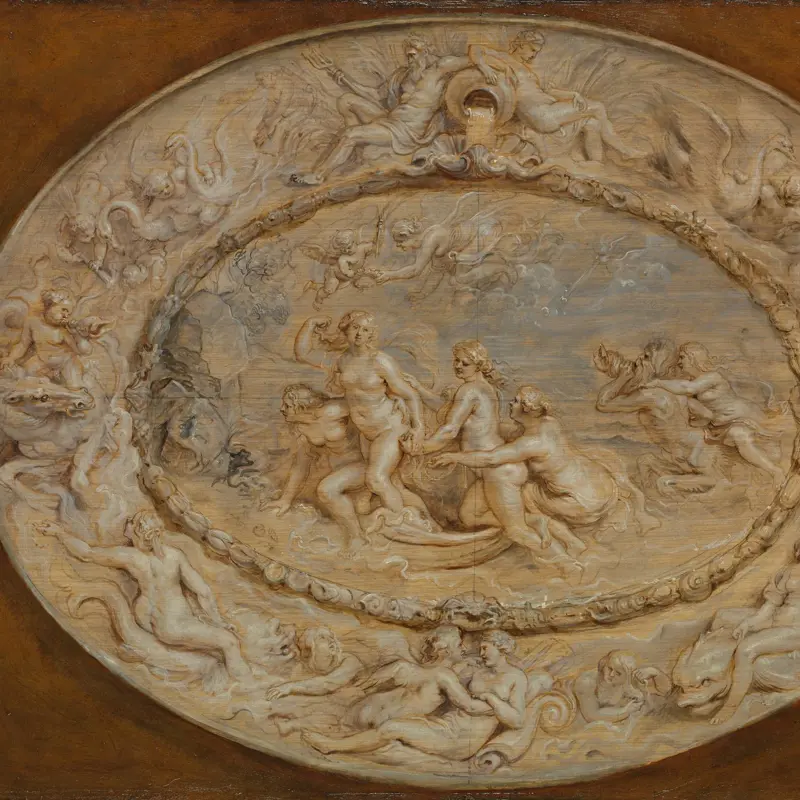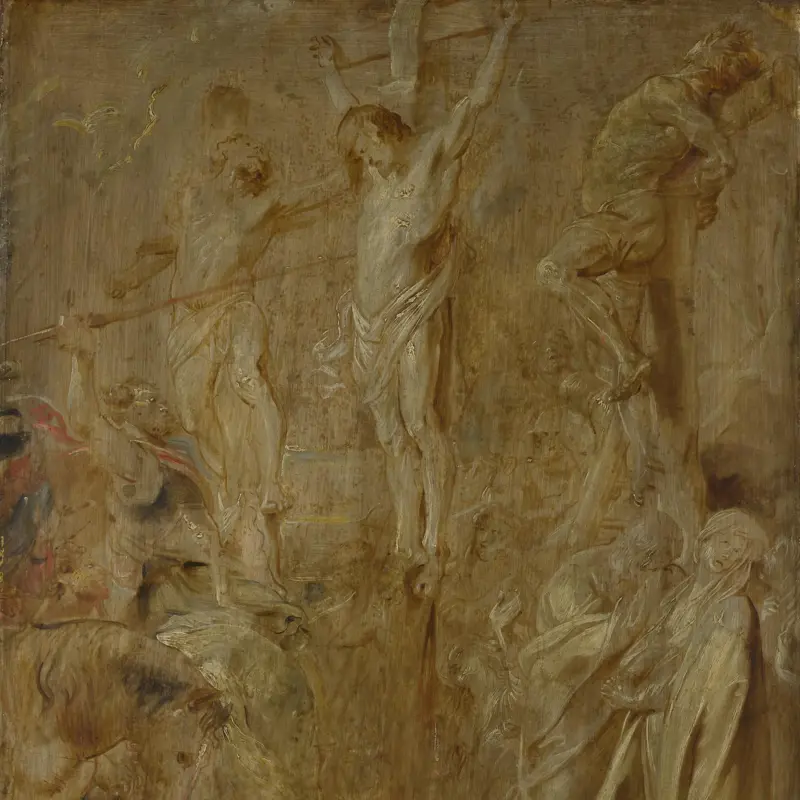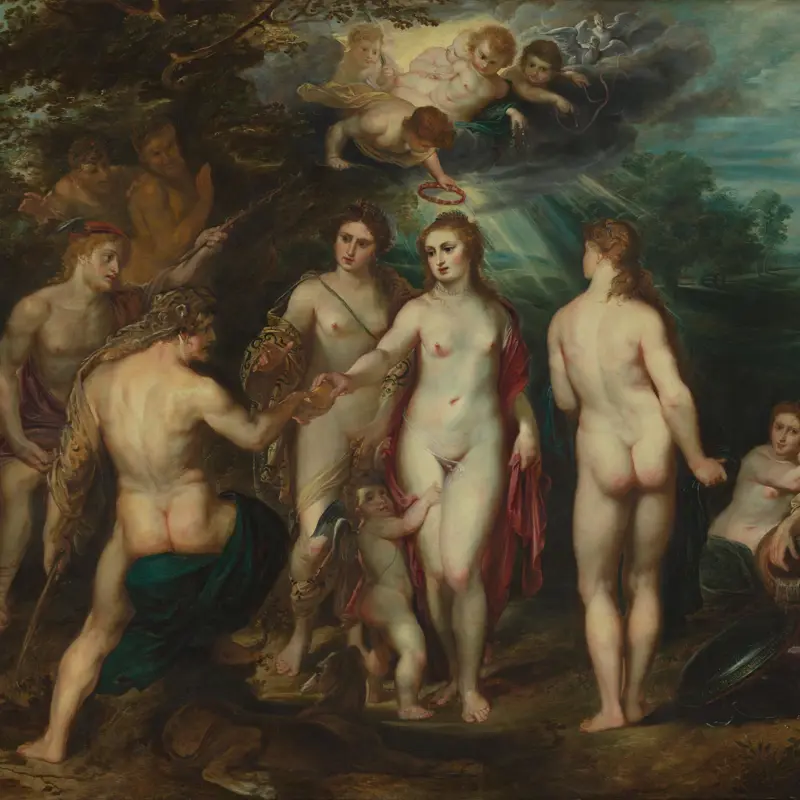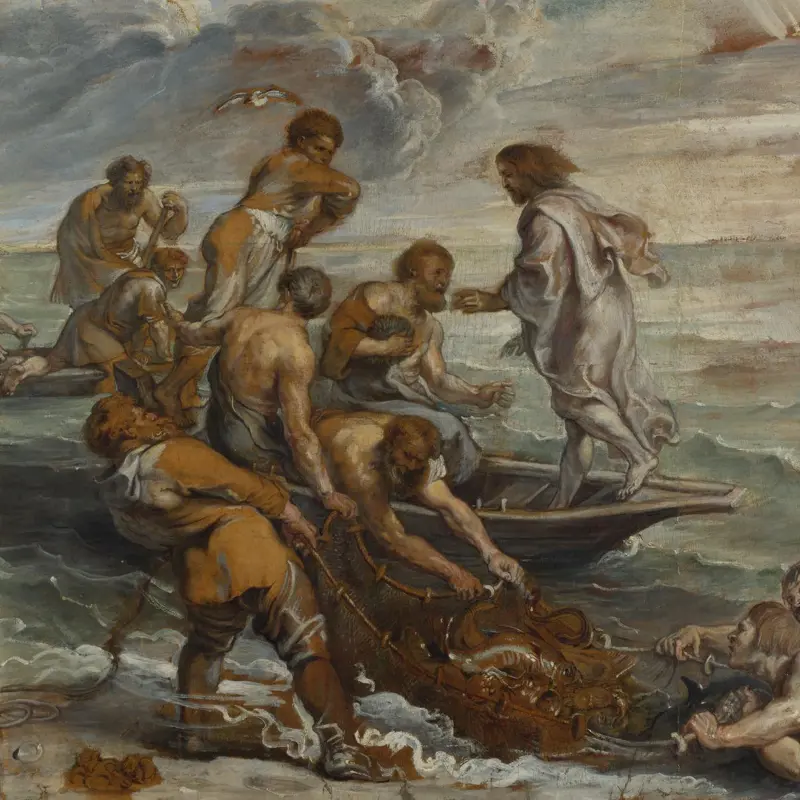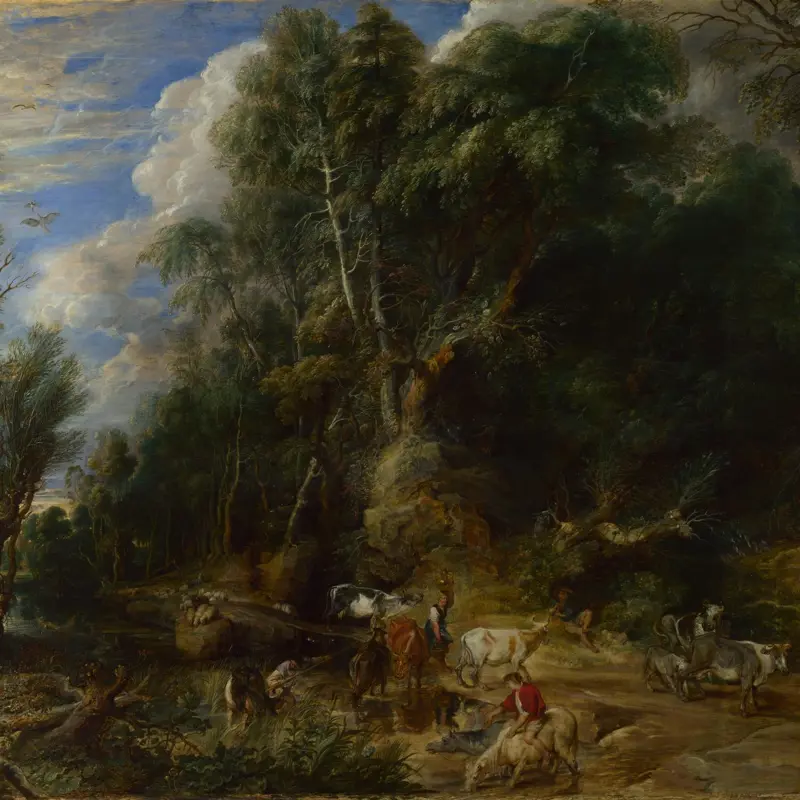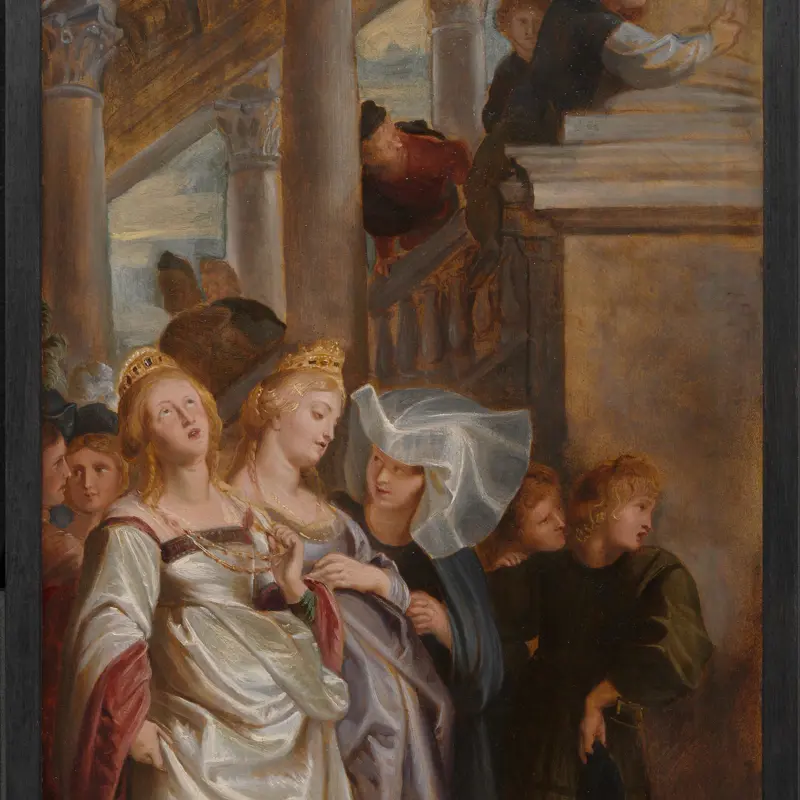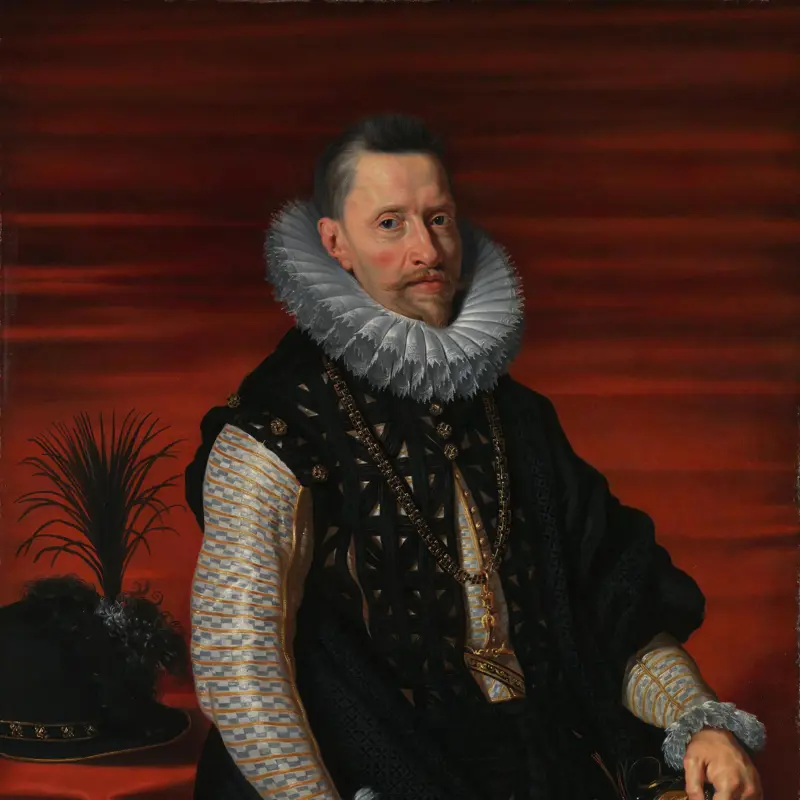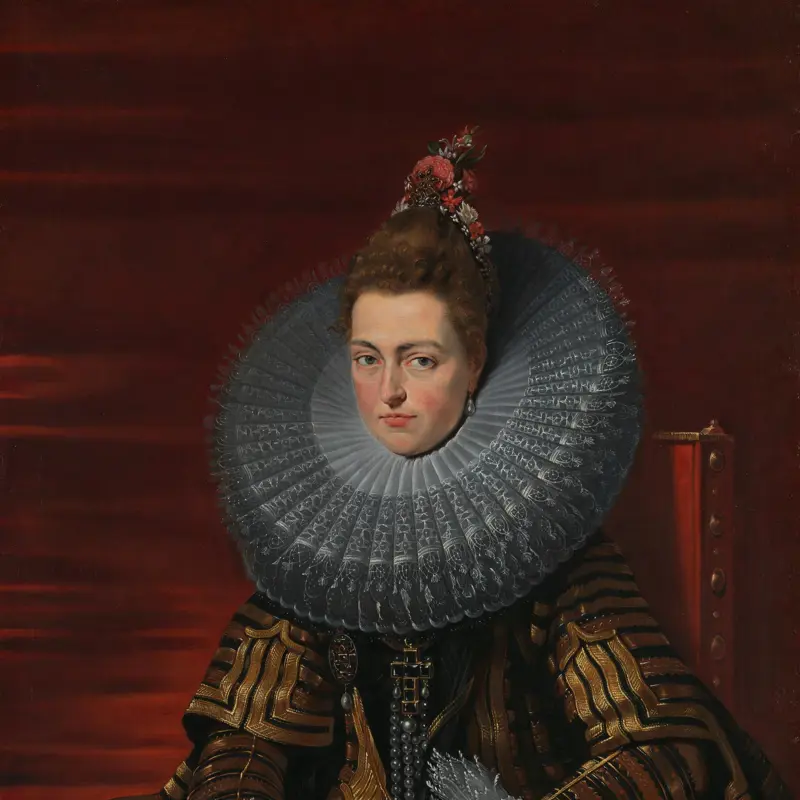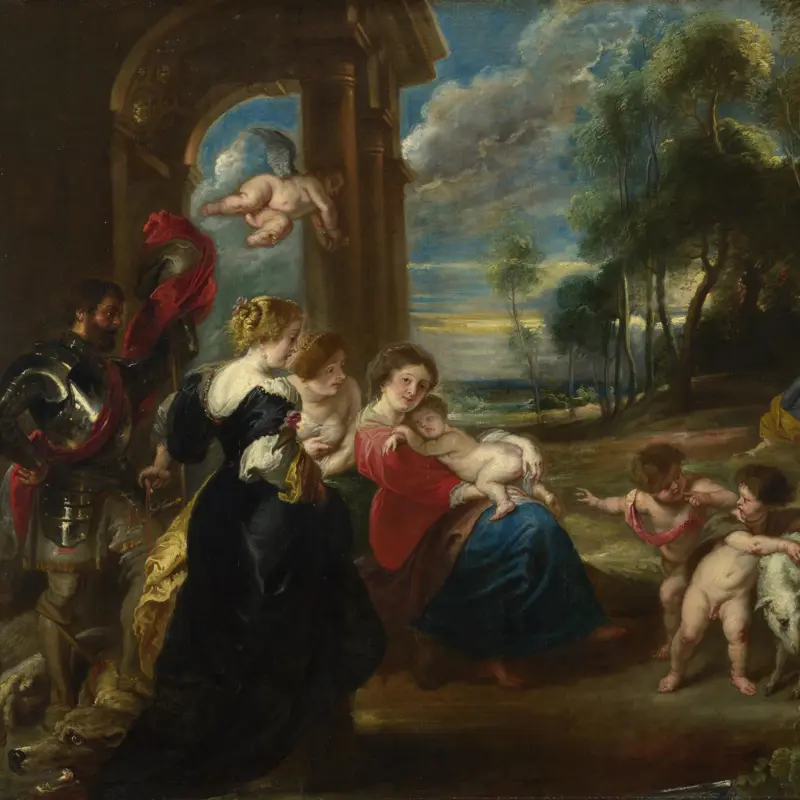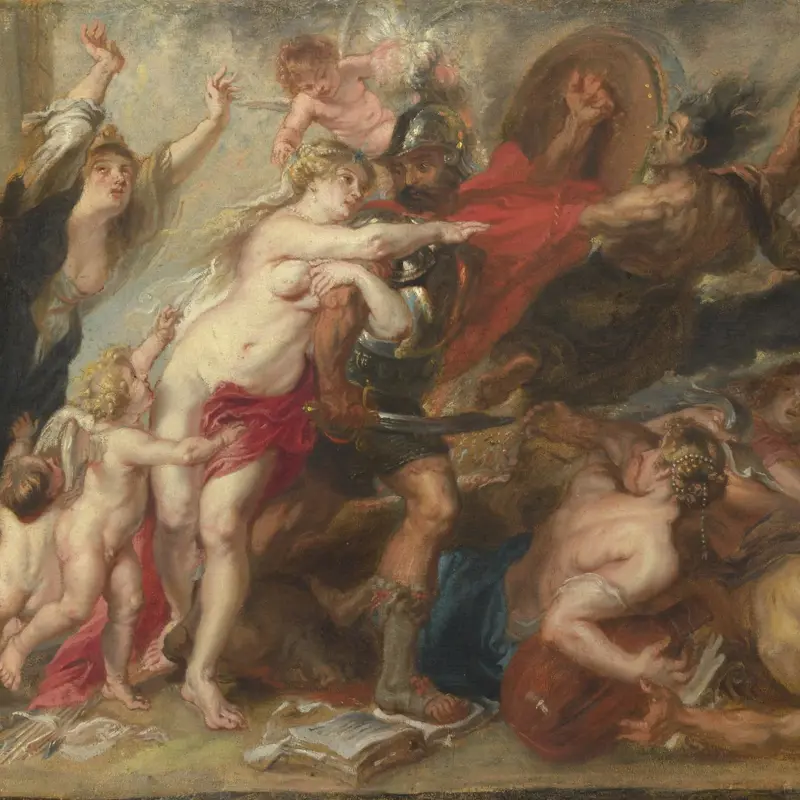Peter Paul Rubens, 'A Landscape with a Shepherd and his Flock', about 1638
About the work
Overview
Rubens has created the impression of a wide-open space by depicting a point of interest in the right foreground – the shepherd watching over his sheep – then using the strong diagonal lines of the river, the road, the edges of the clouds and the raking light to trick our eye. Like the shepherd, we are drawn into gazing out across the landscape, the elevated viewpoint giving the impression that we are seeing further into the distance.
Most of Rubens’s landscapes were made in the last five years of his life, on his new estate in the countryside of Brabant outside Antwerp. As well as evoking a view, his pictures allude to ideas of rural bliss derived from classical authors. Rubens was doing more than reflecting a contemporary pastoral scene – he was demonstrating his literary learning and, by implication, elevating the countryside of his native land to the same cultural status as that of Roman Italy and Ancient Greece.
Key facts
Details
- Full title
- A Landscape with a Shepherd and his Flock
- Artist
- Peter Paul Rubens
- Artist dates
- 1577 - 1640
- Date made
- about 1638
- Medium and support
- oil on wood
- Dimensions
- 49.4 × 83.5 cm
- Acquisition credit
- Bequeathed by Lord Farnborough, 1839
- Inventory number
- NG157
- Location
- Room 20
- Collection
- Main Collection
- Previous owners
- Frame
- 17th-century French Frame
Provenance
Additional information
Text extracted from the ‘Provenance’ section of the catalogue entry in Gregory Martin, ‘National Gallery Catalogues: The Flemish School: circa 1600–circa 1900’, London 1986; for further information, see the full catalogue entry.
Bibliography
-
1829
J. Smith, A Catalogue Raisonné of the Works of the Most Eminent Dutch, Flemish, and French Painters: In Which is Included a Short Biographical Notice of the Artists, with a Copious Description of Their Principal Pictures […], 9 vols, London 1829-1842
-
1886M. Rooses, L'œuvre de P. P. Rubens: Histoire et description de ses tableaux et dessins, 5 vols, Antwerp 1886-92
-
1898J. Burckhardt, Erinnerungen aus Rubens, Basel 1898
-
1903M. Rooses, De Oude Hollandsche en Vlaamsche meesters in den Louvre et in de National Gallery, Amsterdam 1903
-
1904M. Rooses, Rubens, sa vie et ses oeuvres, trans. H. Child, London 1904
-
1905A. Rosenberg, P. P. Rubens: Des Meisters Gemälde in 551 Abbildungen, ed. R. Oldenbourg, Stuttgart 1905
-
1909E. Dillon, Rubens, London 1909
-
1922R. Oldenbourg, Die flämische Malerei des XVII Jahrhunderts, Berlin 1922
-
1926E. Keiser, Die Rubenslandschaft, Rudolstadt 1926
-
1927C. Sterling, Les paysages de Rubens (Esquisse d'une étude), n.p. 1927-1928
-
1931E. Kieser, 'Tizians und Spaniens Einwirkungen auf die späten Landschaften des Rubens', Münchner Jahrbuch der Bildenden Kunst, VIII, 1931, pp. 281-91
-
1936A. Herrmann, Untersuchungen über die Landschaftsgemälde des Peter Paul Rubens, Berlin 1936
-
1939A.J.H. Cornette, 'Petrus Paulus Rubens', in S. Leurs (ed.), Geschiedenis van de Vlaamsche Kunst, Antwerp 1939, vol. 2, pp. 647-742
-
1945G. Glück, Die Landschaften von P. P. Rubens, Vienna 1945
-
1947P. Hendy, An Exhibition of Cleaned Pictures of 1947: (1936-1947), London 1947
-
1959J. Held, Rubens: Selected Drawings, London 1959
-
1970G. Martin, The Flemish School, circa 1600-circa 1900, London 1970
-
1977O. Millar, 'Rubens's Landscapes in the Royal Collection: The Evidence of X-Ray', The Burlington Magazine, CXIX/894, 1977, pp. 631-5
-
1979A. Braham, Rubens, Themes and Painters in the National Gallery 8, London 1979
-
1980J. Held, The Oil Sketches of Peter Paul Rubens: A Critical Catalogue, Princeton 1980
-
1982W. Adler, Landscapes and Hunting Scenes, Corpus Rubenianum Ludwig Burchard 18, vol. 1, Landscapes, London 1982
-
1982L. Vergara, Rubens and the Poetics of Landscape, New Haven 1982
-
1986Martin, Gregory, National Gallery Catalogues: The Flemish School, circa 1600 - circa 1900, London 1986
-
1987C. White, Peter Paul Rubens: Man and Artist, New Haven 1987
-
1988Y. Thiery, Les peintres flamands de paysage au XVIIe siècle: Des précurseurs à Rubens, Brussels 1988
-
1989M. Jaffé, Rubens: Catalogo completo, Milan 1989
-
1996O. von Simson, Peter Paul Rubens (1577-1640): Humanist, Maler und Diplomat, Mainz 1996
-
1996C. Brown, Rubens's Landscapes (exh. cat. The National Gallery, 16 October 1996 - 19 January 1997), London 1996
-
2000C. Brown, 'The Construction and Development of Rubens's Landscapes: Reflections on the London Exhibition', in H. Vlieghe et al., Concept, Design and Execution in Flemish Painting (1550-1700), Turnhout 2000, pp. 267-278
-
2001
C. Baker and T. Henry, The National Gallery: Complete Illustrated Catalogue, London 2001
-
2001T. Noll, '"Der sterbende Seneca" des Peter Paul Rubens: Kunsthistorisches und weltanschauliches Programmbild', Münchner Jahrbuch der Bildenden Kunst, LII/3, 2001, pp. 89-158
-
2008K. Jonckheere, The Auction of King William's Paintings, 1713: Elite International Art Trade at the End of the Dutch Golden, Amsterdam 2008
-
2014C. Kleinert, Peter Paul Rubens (1577-1640) and his Landscapes: Ideas on Nature and Art, Turnhout 2014
-
2016E. Bergvelt and M. Jonker, Dutch and Flemish Paintings: Dulwich Picture Gallery, London 2016
-
2020L. Davis, Rubens: The Two Great Landscapes, London 2020
About this record
If you know more about this work or have spotted an error, please contact us. Please note that exhibition histories are listed from 2009 onwards. Bibliographies may not be complete; more comprehensive information is available in the National Gallery Library.

